Juniper horizontal "Prince of Wales": description, planting and care

Juniper is a culture that conquers with its decorative qualities. The Prince of Wales variety is one of the most popular. A variety of low-growing coniferous shrubs from Canada is unpretentious, undemanding to care and very beautiful. Let's consider the features of this variety in more detail and find out what the rules for planting it are.
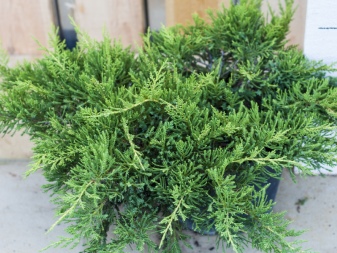
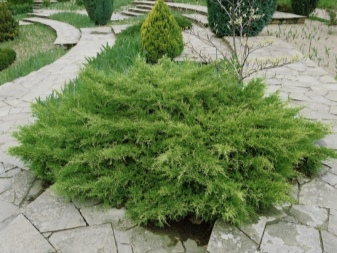
Description
Prince of Wales was created from a wild species. It is the shortest of the horizontal junipers. The culture is perennial, creeping, with a branched structure. It easily tolerates cold (up to -30 degrees), which allows it to be grown in different regions of the country. An adult shrub does not require shelter for the winter. Only young specimens grown in harsh climates are covered.
The plant does not have a central trunk. Shoots are formed near the surface of the earth (their length is about 1.5 m). At first, it seems that each branch is separate. However, as it grows, the upper shoots cover the lower ones, due to which a solid green "carpet" is formed. The root system of the plant is well-branched. The root circle can be up to 50 cm.
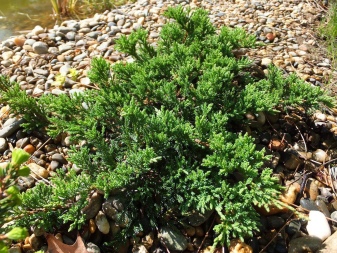
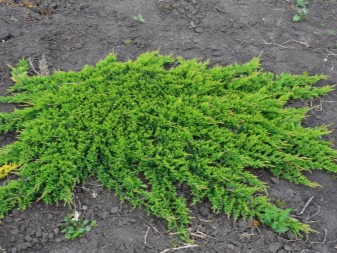
The culture is growing rather slowly. Only 1 cm in height is added annually. The bush increases in width by 5-6 cm. A plant is considered an adult after reaching the age of ten.
The maximum plant height of this variety is 20 cm. The crown diameter is about 2.5 m. The growing conditions can influence the size of the juniper. For example, in light shade by the Prince of Wales, it may be larger than in an open, sunny location.
Young bushes have a pleasant green shade of needles. As it matures, the color of the plant becomes silvery. In autumn, the bush does not shed its foliage, but changes its color to purple-plum. Against the background of a snow-covered garden, it looks especially impressive.
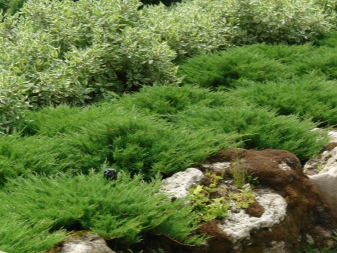
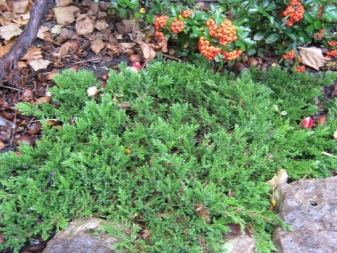
The fruits of the culture are spherical, of medium size. The color is bluish-silver. Berries of this variety can be eaten. The spicy flavor allows them to be added as a condiment to various meat and fish dishes. The rich chemical composition (vitamins, essential oils, trace elements) determines the use of the fruits of the shrub in cosmetology.
The culture is often used to decorate parks and home gardens. At the same time, the variety is undemanding, due to which it is very fond of gardeners. However, in order to grow a beautiful and healthy bush, you should still follow the basic rules of planting and care.
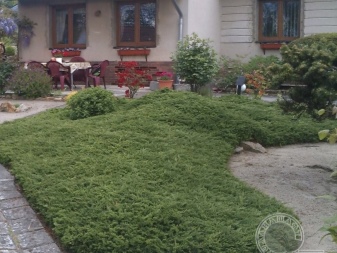

How to plant?
Site selection
This variety loves sunlight, although partial shade is considered ideal for its development. If you plant a plant in an open area, you will need to maintain optimal soil moisture. An absolute shadow is also undesirable. In such conditions, the juniper loses its decorative qualities. The needles are small and sparsely located, the crown seems loose and unkempt, its color is faded and even slightly yellowish.
The composition of the soil is not very important. The shrub can grow even in poor soil. However, it is desirable that it be light, with good drainage. The acidity should be at a neutral level. If the soil is acidic, its composition should be changed six months before planting. For this, lime or dolomite flour is added to the soil.
It is important to remember that the crop has a large crown diameter, so there should be enough space on the site for an adult plant. Also, don't plant junipers next to fruit bushes. Otherwise, there is a risk of rusting the Prince of Wales.
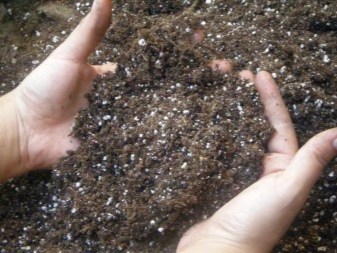
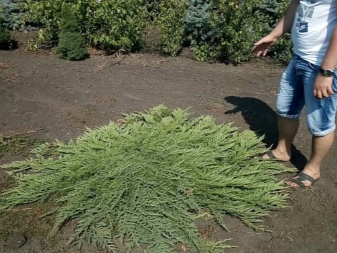
Preparation
It is better to buy planting material in specialized nurseries. Although self-propagation is also allowed. When choosing a ready-made seedling, it is worth giving preference to specimens with a perfectly formed root. The branches should be flexible and not dry. The needles should be healthy in appearance and have a green color.
Before planting, the soil must be dug up. Then peat is introduced into the soil (this makes it lighter). A little sand is added to improve drainage. The width of the hole for the seedling should be 20 cm larger than the diameter of the root system. When determining the depth, the height of the root to the root collar is taken into account.
Also take into account drainage and soil, which will be sprinkled with a young plant. The average parameters of the landing hole are 60 by 70 cm.
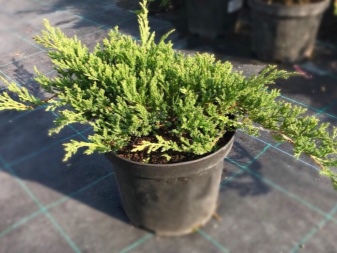
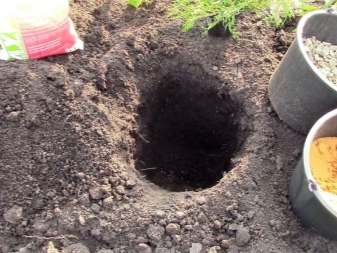
If the decision is made to move the shrub from one place to another, it is important to remove the plant correctly. First, the branches are gently lifted and directed towards the center. Then the terrestrial part of the culture is wrapped in a cloth. For reliability, you can fix the material with a rope.
After that, the bush is dug in from all sides. At the same time, about 50 cm should be retreated from the center. The depth of digging depends on the age of the culture. Usually, the shovel is immersed in the ground 40-45 cm. The bush must be removed along with an earthen lump.
The transplant can be carried out both in the autumn and in the spring. In a new place, the variety usually takes root well.

Planting process
First of all, you should prepare a fertile mixture for planting. Recommended composition includes peat, turf and sand. All components are taken in equal proportions.
Ash is also added. It should occupy ¼ of the composition. Replacement of this component with dolomite flour is allowed. Then you can proceed to the direct planting process.
- A drain is placed at the bottom of the fossa. In its capacity, you can use crushed stone, gravel, expanded clay. The layer should be about 15 cm.
- Divide the prepared soil mixture in half.
- The first half of the fertile composition is poured over the drainage.
- The seedling is placed in the center of the hole. In this case, the root collar must necessarily rise 2 cm above the surface of the earth.
- The planting material is carefully covered with the second part of the mixture, watering is carried out.
If an adult plant is transplanted, tissue protection is removed from it. The branches are gently straightened. If several bushes of the same variety are planted, the distance between them should not be less than 50 cm.
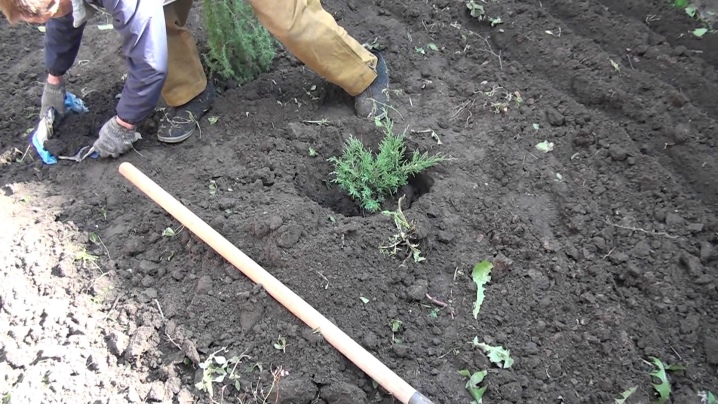
How to take care of it properly?
Watering
Despite the fact that the variety is resistant to drought, in order to preserve the high decorative effect of the bush, it must be provided with a sufficient amount of moisture. The young plant should be watered daily for 1 to 2 weeks. The procedure is best done in the evenings. In the future, the shrub will have enough moisture obtained from the natural environment. However, in the summer, it is advisable to water it sometimes.
It is also recommended to spray the bush with a spray bottle. Sprinkling will help keep the needles fresh even on hot days.
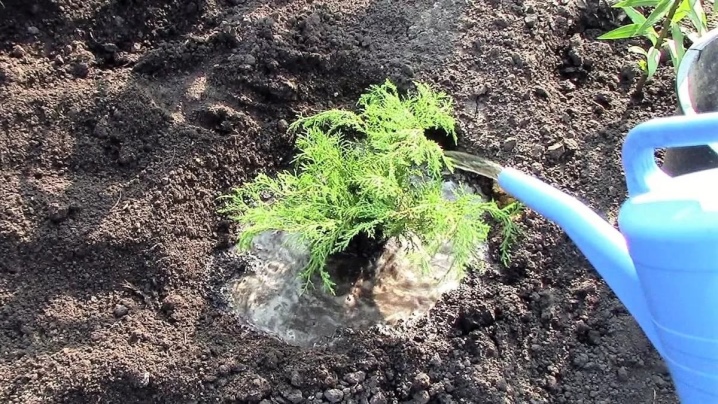
Fertilizers
Juniper does not need top dressing. Only the first 2 years at the beginning of spring can be applied to the soil "Kemira". Upon reaching the age of three, the bush ceases to need any drugs.
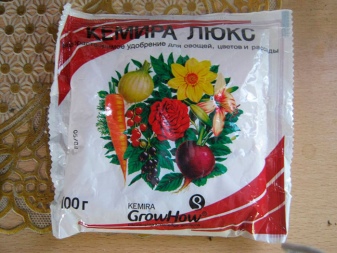
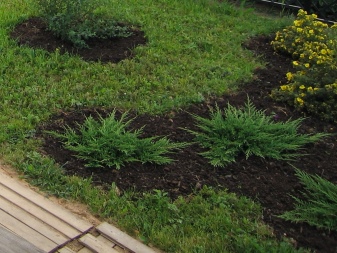
Mulching
This procedure is carried out immediately after planting. The root area is covered with straw and dry leaves. You can also use tree bark. Annual mulch renewal is a must. Do it in the fall.
It is not necessary to loosen the soil around the mature plant. Mulch maintains an optimal level of soil moisture. Weeds also do not appear under a dense layer.As for young plants, loosening is carried out here in late spring and autumn (before laying a new mulch).
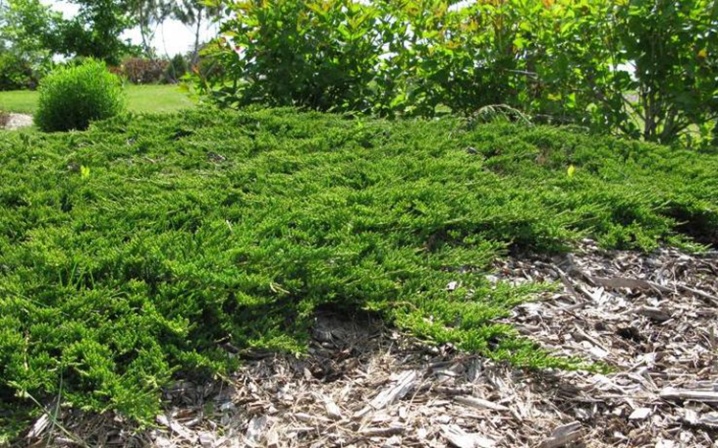
Pruning
The Prince of Wales annual wellness pruning is done in the spring. If frozen branches are found, they are removed. If the wintering went well, and the integrity of the crown is not violated, there is no need to cut the bush.
The formation of an evergreen ephedra is a procedure that is carried out only at the request of the gardener. The natural form of the plant is very decorative, so it is often left unchanged. However, if you need to make the crown more compact and even, the tops of the branches are cut to the required size.
Slow growth ensures long-term preservation of the shape given to the bush. As a rule, the result lasts for several years.
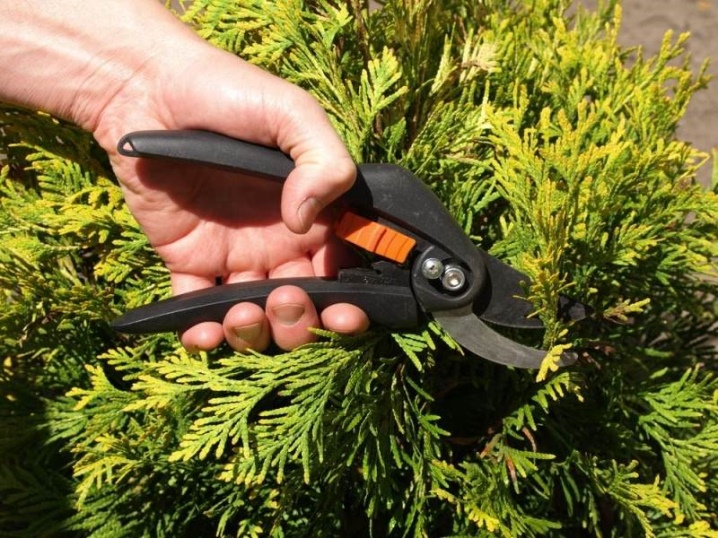
Preparation for wintering
As already mentioned, young seedlings should be protected from the winter cold. To do this, at the end of autumn, the plant is sprinkled around the mulch with a layer of at least 15 cm. Then the branches are collected in a bunch. This protects them from possible damage due to the severity of the snow.
Then the plant is covered with spruce branches. Another good option is to build a shelter from metal arcs and stretched film.
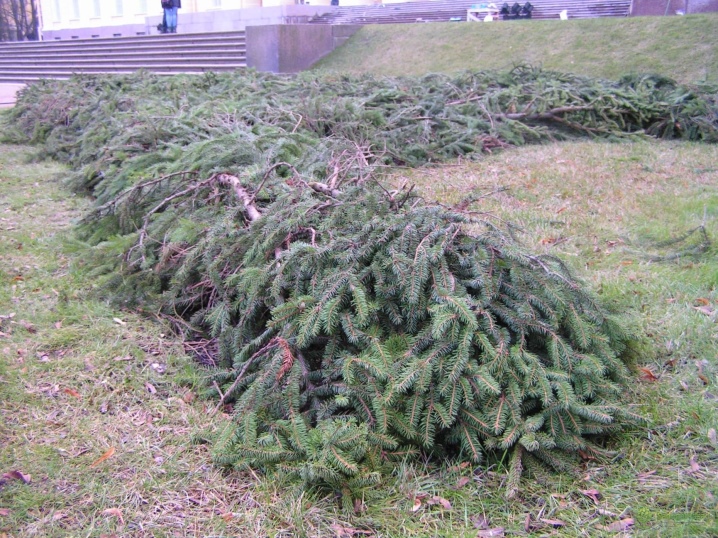
Reproduction methods
The most common breeding method for this variety is considered rooting of cuttings. In this case, the shoot is pressed against the soil. Sprinkle earth on top of it.
It is important for some time to ensure that the amount of soil on the shoot does not decrease. If the need arises, the soil is filled up. The procedure is carried out in the spring.
A year later, the gardener already receives a new isolated plant. The formation of an independent root system is coming to an end. Young juniper can be separated from the mother bush and moved to a new location.
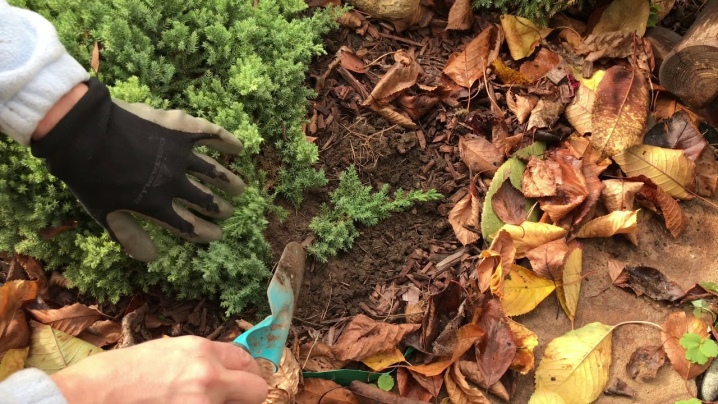
The second option is grafting... For this, the branches of a biennial plant are suitable. Harvesting of planting material is carried out in spring or autumn. The stalk is placed in a container with fertile soil. After rooting, the young plant is planted on the site.

The third breeding method for juniper is graft... This option is quite time consuming, therefore it is rarely used. On a trunk of another species, Prince of Wales takes root with difficulty.
Concerning seed reproduction method, theoretically it is possible. However, it should be borne in mind that the seeds of this variety do not retain varietal characteristics. The shrub obtained in this way will be similar to the representatives of the variety, but very distantly.
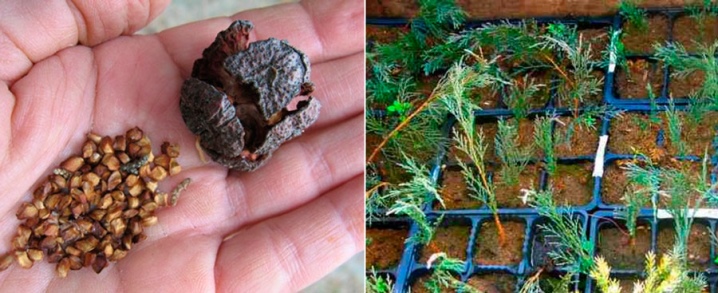
Diseases and pests
Like any other plant, the "Prince of Wales" can be attacked by garden pests. There are several main threats. it aphids, scale insects, spider mites and sawflies. Any of the listed insects are fought by spraying the bush with insecticides. Of course, if possible, the pests themselves are removed (branches are partially cut off or insects are collected by hand).
As for diseases, this variety is only scary rust. The cause of the onset of the disease can be waterlogging of the soil.
Also previously mentioned about the danger of the neighborhood of juniper with fruit trees. They solve the problem with the help of copper sulfate.
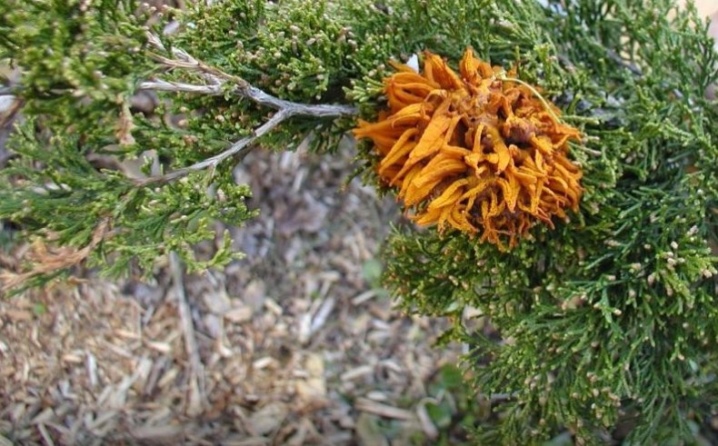
Use in landscape design
This undersized type of juniper is often used as a green decoration. on personal plots, in parks, on flower beds near restaurants and office buildings. Due to the creeping wide crown, it looks great both in single plantings and in group compositions.
"Prince of Wales" is harmoniously combined with other coniferous shrubs, as well as flowering crops. Often, the variety imitates a lawn in rocky gardens and rock gardens. He decorates slopes, curbs, decorates artificial reservoirs (ponds, waterfalls). If you plant junipers on several levels, you can end up with a spectacular flowing cascade. It is also permissible to grow a plant in a container to decorate a loggia or terrace.


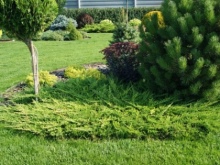
For more information on this type of juniper, see the next video.



































































The comment was sent successfully.